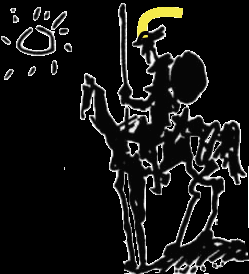 Did an errant prince from days of yore in search of El Dorado1 drop his helmet?
Did an errant prince from days of yore in search of El Dorado1 drop his helmet?I thought this might be the case ... I was in the right part of the country. But then I walked closer and saw that the glowing yellow mass was an herbaceous plant. It was over a meter tall, with a dozen stalks, and was covered in hundreds of yellow buds and flowers. A multitude of insects crawled, flitted and otherwise wandered through the yellow paradise – a scene full of life.
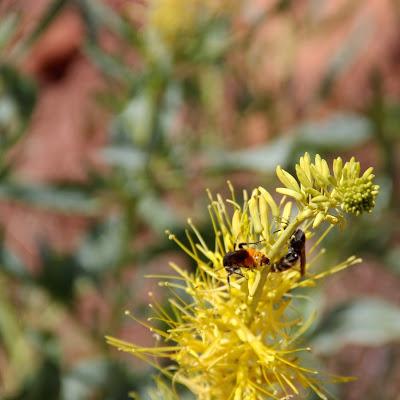
The many critters were so active that it was hard to capture them in photos.
Was this a healthy garden, a lush mountain meadow, a well-watered stream bank?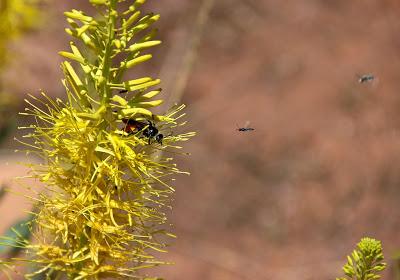
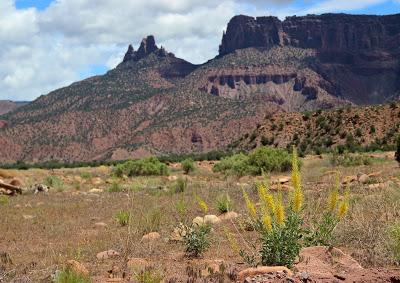
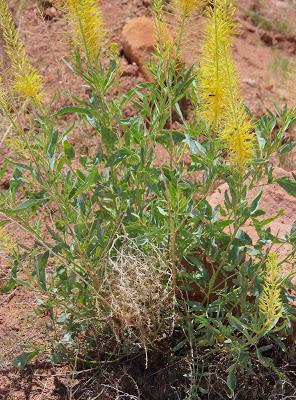
This prince's plume has trapped a tumbleweed.
Prince’s plume is a member of the mustard family (Brassicaceae), and like most mustards it has flowers with four sepals, four petals, six stamens and a single pistil – all yellow in this case. There also are four nectar glands per flower – probably why there were so many insects about.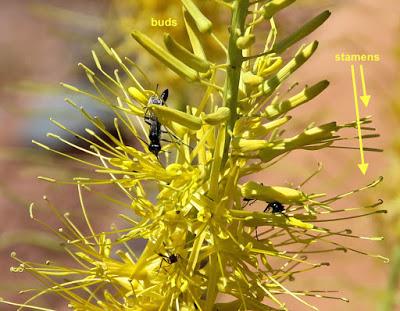
The long exserted stamens are dramatic!
After fertilization, the ovaries elongate to become narrow spreading siliques containing small seeds about 2 mm across.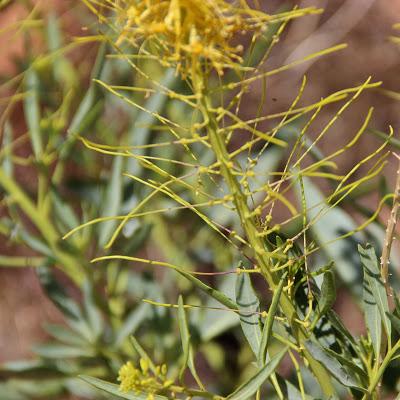
In the mustard family long narrow capsules are called siliques.
Stems and leaves of prince’s plume are a distinctive waxy bluish-green. In subspecies pinnata, the basal leaves are deeply lobed (upper ones are entire).
A pinnately lobed basal leaf.
I was impressed to find this tall fecund herbaceous perennial in such an arid environment – the annual precipitation at nearby Gateway averages 11.3 inches or 28.7 cm (source). And aridity is only one of the challenges. Prince’s plume is a reliable indicator that there's selenium in the soil.Selenium in trace amounts is beneficial to plants, and dietary selenium is required by animals, but there’s a fine line between benefit and toxicity. Plants containing selenium are toxic to most animals, and too much selenium reduces seed production in many plants. Yet it doesn't bother the prince's plume.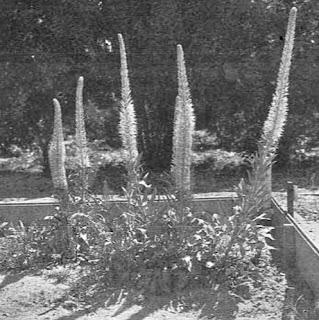
Stanleya pinnata (S. tomentosa at the time) from a study of seleniferous soils and toxic vegetation in Wyoming (Beath et al. 1946).
Prince’s plume doesn’t just tolerate selenium, it accumulates it – mainly in pollen, ovules, and leaf margins. In fact, it’s a hyperaccumulator, containing 10 to 100 times as much selenium as other plants at the same site. These levels are detrimental to most plants, but in prince's plume there appears to be no impact on pollinator visitation nor on reproductive output, perhaps due to the chemical form in which the element is stored (El Mehdawi & Pilon-Smits 2011).Furthermore, prince's plume benefits from accumulating toxic amounts of selenium – it discourages both chomping herbivores and sucking pathogens. For example prairie dogs eat prince's plume if selenium levels are low, but avoid plants with high concentrations (Freeman et al. 2009). Presence of selenium has been shown to deter phloem-feeding aphids also (El Mehdawi & Pilon-Smit 2011).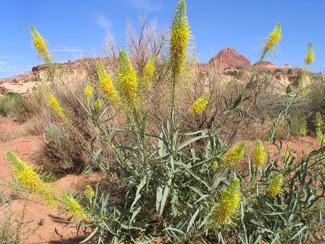
Prince’s plume in Utah. Courtesy USDI Bureau of Land Management.
This would seem a perfect plants-and-rocks story – a geobotanical tale of selenium and the prince’s plume. Unfortunately we haven’t figured out the geological part. Prince’s plume grows in western North America on seleniferous soils derived from fine-grained sedimentary rocks – shales, mudstones and siltstones (source). Some geologists attribute this selenium to Mesozoic volcanic activity, but others disagree (reviewed in Rosenfeld and Beath 2013, pp 9-12). Once again, more work needs to be done … the search continues.Footnote:1 The North American El Dorado was one of the mythological Seven Cities of Gold which lay somewhere north of Mexico (16th century).
Sources (in addition to links in post)
Beath, OA. 1946. Some rocks and soils of high selenium content. Wyoming Geological Survey Bulletin No. 36.
Brown, TA and Shrift, A. 1982. Selenium: toxicity and tolerance in higher plants. Biological Reviews 7:59-84.El Mehdawi, AF and Pilon-Smits, EAH. 2011. Ecological aspects of plant selenium hyperaccumulation. Plant Biology 14:1-10.Freeman, JL et al. 2009. Selenium protects the hyperaccumulator Stanleya pinnata against black-tailed prairie dog herbivory in native seleniferous habitats. Am J Bot 96:1075-1085.Rosenfeld, I and Beath, OA. 2013. Selenium: geobotany, biochemistry, toxicity, and nutrition. Academic Press.
